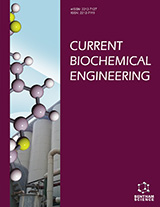Abstract
Background: Jicaro seeds can be considered oilseeds due to their high content of lipids, which could be used. Aqueous Enzymatic Extraction (AEE) of oils is a safe, economical and ecological technique, with the disadvantage that oil yields are lower than conventional methods. The microwaves pre-treatment of the seeds has been applied to overcome this inconvenience. Therefore, the objective of this study was to investigate the aqueous enzymatic extraction of oil from Jicaro seed pretreated in a microwave (M-AEE) compared to Soxhlet extraction, in terms of oil yield and its quality.
Methods: M-AEE was evaluated varying type of enzyme, extraction time, enzyme concentration, solid/liquid ratio and particle size, according to Fractional Factorial experimental design. The obtained oil was analyzed in terms of fatty acid content and antioxidant activities. The same analyses were performed in oil obtained by Soxhlet extraction for comparison.
Results: All parameters investigated in this work had a positive effect on the extraction process. The highest oil yield of 69.71% was obtained with a particle size of 0.59 mm, 3% (w/w) of Viscozyme L, solid/ liquid ratio of 1:6, and 5 h. No differences were found in fatty acid content and antioxidant activity between the oil obtained by M-AEE and that obtained by SE.
Conclusion: The properties of the oil were not different in the two extraction methods evaluated; however, M-AEE has the advantage of being environmentally friendly technique. Jicaro seed oil physicochemical properties were similar to edible oils, thus could be considered as a new option of edible vegetable oil.
Keywords: Aqueous enzymatic extraction, jicaro seed, microwave, oil extraction, edible oils, viscozyme L, enzyme.
Graphical Abstract
[http://dx.doi.org/10.1353/lag.2005.0002]
[http://dx.doi.org/10.1007/978-1-4419-0471-3_2]
[http://dx.doi.org/10.1016/j.jfca.2016.11.007]
[http://dx.doi.org/10.1016/S0378-8741(00)00349-4] [PMID: 11137354]
[http://dx.doi.org/10.1016/j.foodres.2017.03.009] [PMID: 28528090]
[http://dx.doi.org/10.1016/j.jfoodeng.2017.06.011]
[PMID: 11048589]
[http://dx.doi.org/10.1016/S0260-8774(02)00262-5]
[http://dx.doi.org/10.1016/j.jfoodeng.2011.10.027]
[http://dx.doi.org/10.1016/j.foodchem.2012.12.011] [PMID: 23497870]
[http://dx.doi.org/10.1016/j.foodchem.2012.04.111]
[http://dx.doi.org/10.1016/j.ultsonch.2016.01.029] [PMID: 26964969]
[http://dx.doi.org/10.1016/j.supflu.2015.08.006]
[http://dx.doi.org/10.1080/14786419.2010.483229] [PMID: 21500095]
[http://dx.doi.org/10.1016/j.foodchem.2013.09.079] [PMID: 24206680]
[http://dx.doi.org/10.1016/j.foodchem.2010.09.064] [PMID: 30634286]
[http://dx.doi.org/10.1007/s11746-009-1357-8]
[http://dx.doi.org/10.1016/j.foodchem.2012.04.111]
[http://dx.doi.org/10.1016/j.chroma.2016.10.037] [PMID: 27765423]
[http://dx.doi.org/10.1016/j.indcrop.2013.09.014]
[http://dx.doi.org/10.1007/s11746-006-1004-6]
[http://dx.doi.org/10.1007/s11746-002-0463-0]
[http://dx.doi.org/10.1016/S0141-0229(00)00351-3] [PMID: 11267644]
[http://dx.doi.org/10.1016/j.foodchem.2016.05.050] [PMID: 27283648]
[http://dx.doi.org/10.1016/j.biortech.2004.02.026] [PMID: 15364090]
[http://dx.doi.org/10.1016/j.indcrop.2012.12.050]
[http://dx.doi.org/10.1128/AEM.70.2.929-936.2004] [PMID: 14766573]
[http://dx.doi.org/10.20937/RICA.2016.32.03.05]
[http://dx.doi.org/10.1002/ptr.687] [PMID: 11268111]
[http://dx.doi.org/10.1016/j.arabjc.2014.05.025]
 22
22 2
2
















